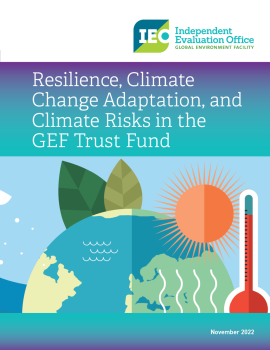Overview
Although the GEF is not focused on climate change adaptation, there has been growing recognition that the effects of climate change impact the GEF's ability to achieve and sustain global environmental benefits. The GEF has addressed these effects in different ways, including screening its projects for climate change risks, introducing adaptation co-benefits when feasible and appropriate, and strengthening system resilience against a range of shocks (including those caused by climate change) most notably in some of its integrated programs.
This study aims to understand how the GEF has integrated climate resilience, adaptation and risk into its programming and to provide evidence on the relationship between addressing resilience, adaptation and climate risks and project outcomes. The study uses a variety of methods, including a targeted review of 34 projects with high integration of climate change adaptation or resilience.
Findings
- The GEF is in a unique position to integrate climate adaptation and resilience across its diverse set of environmental focal areas.
- Resilience, climate change adaptation and climate risks are increasingly being integrated into GEF strategies and projects, but the definitions of these terms are not quite clear.
- Integration of climate adaptation and resilience into GEF projects is correlated with positive project outcomes.
- The GEF's guidance on climate resilience, adaptation and risk has mostly been viewed positively by its Agencies, but greater clarity is needed on the GEF Secretariat's quality review.
- The resilience, adaptation pathways and transformation approach (RAPTA) provides a tool for integration of resilience into GEF projects, though it has not been widely adopted.
